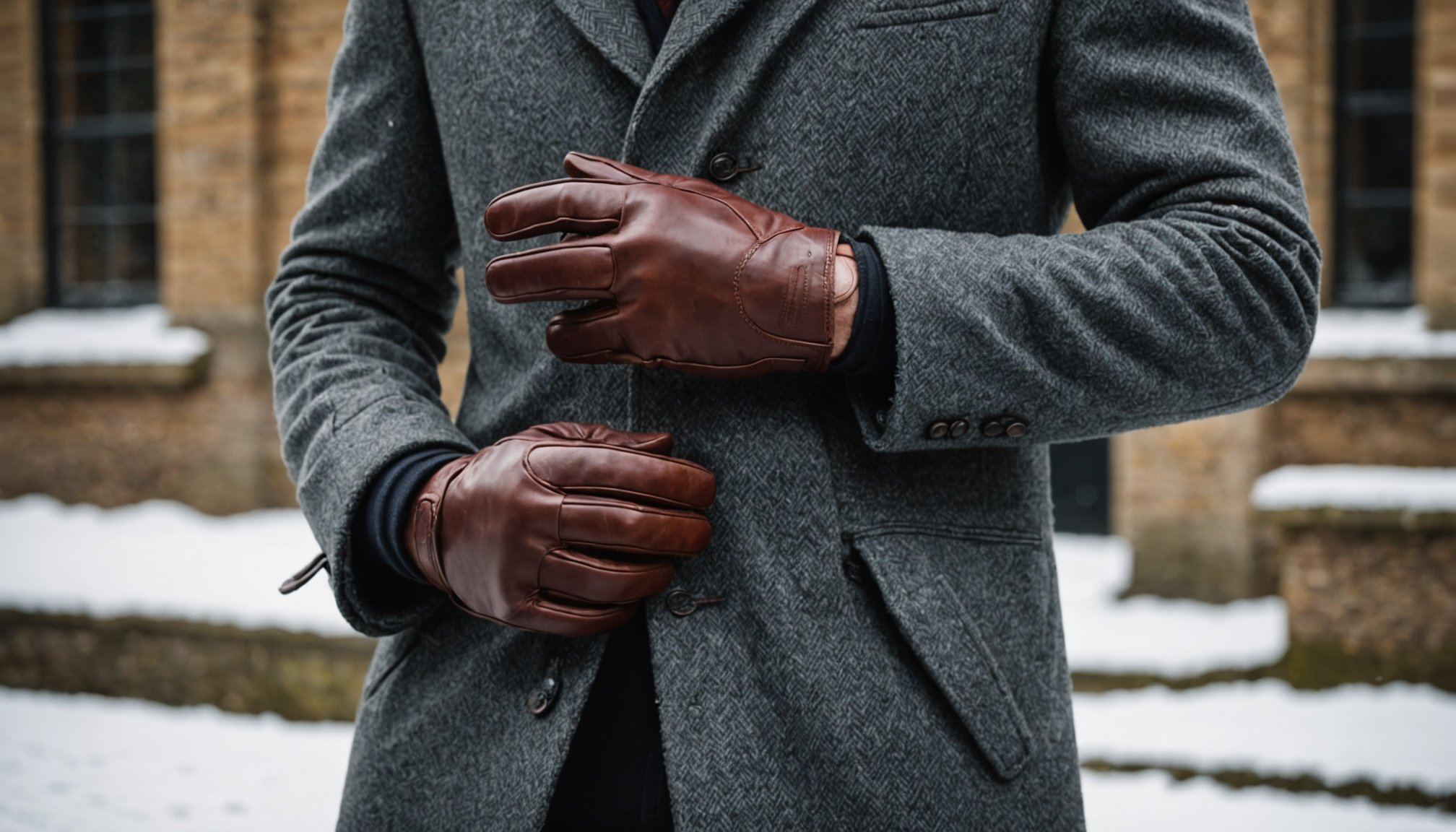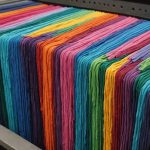Factors to Consider When Selecting Leather Gloves for Winter
Choosing the right leather gloves for winter is crucial for warmth and comfort. Consider the following key factors:
Insulation Effectiveness: The insulation in leather gloves directly impacts their ability to keep your hands warm. Insulation materials, such as Thinsulate or fleece lining, provide different levels of warmth. For extremely cold climates, opt for gloves with higher insulation ratings to ensure adequate protection against the cold.
Also read : Embrace the Chic Farmhouse Vibe: Stylish Ways to Incorporate Gingham and Denim
Durability Aspects: Leather gloves designed for winter should be durable, especially if used for outdoor activities. Look for high-quality leather, such as cowhide or goatskin, which offers excellent resistance to wear and tear. Reinforced stitching and padded palms can enhance durability, ensuring the gloves withstand harsh conditions.
Importance of Fit and Comfort: A proper fit is essential for retaining warmth and ensuring flexibility. Gloves that are too tight might restrict movement, while loose ones could let cold air in. Ensure your leather gloves fit snugly yet comfortably, allowing for movement without sacrificing warmth. Proper fit also enhances the feel of the gloves, ensuring they are a pleasure to wear in cold weather.
Also to see : Transform Your High Street Fashion for Standout Style at UK Music Festivals
Types of Leather Suitable for Winter Gloves
When selecting the right material for winter gloves, understanding the winter leather types, leather quality, and leather properties is crucial.
Full-Grain Leather
Full-grain leather is often regarded as the highest quality for winter gloves. It retains the natural grain of the hide, offering excellent durability and resistance to moisture. It provides a luxurious feel and develops a rich patina over time, enhancing its aesthetic appeal.
Suede Leather
Suede leather is known for its soft, velvety texture, making it a popular choice for those seeking comfort in their gloves. While it offers less water resistance than full-grain leather, it provides excellent insulation due to its texture. Suede gloves are ideal for dry, cold environments where flexibility and warmth are prioritized.
Patent Leather
Patent leather is distinct for its glossy finish and is generally used in fashion-centric gloves rather than for warmth. Its sleek surface repels water easily, which adds a layer of practical elegance. However, its insulation properties are not as high as other types, making it less suited for very cold temperatures but excellent for style.
By understanding these leather properties, you can choose a pair of winter gloves that best suits your needs and preferences.
Insulation Options for Leather Gloves
When choosing leather gloves for winter, glove insulation is paramount to ensure warmth and comfort. In today’s market, several materials are used to insulate gloves, each with unique warmth features.
Types of Insulation
-
Thinsulate: A popular synthetic option known for its thin profile and impressive heat retention. It provides excellent insulation without adding bulk, making it ideal for dexterous activities.
-
Fleece: Often a choice for those seeking affordability. Fleece is soft, breathable, and effective in trapping heat, although it may not perform as efficiently as some synthetics in extreme cold.
Natural vs Synthetic Insulation
Natural materials, such as wool, are prized for their excellent moisture-wicking properties and ability to maintain warmth when wet. However, synthetic insulation like Thinsulate offers superior durability and lightweight winter glove technology, enhancing ease of movement.
Heat Retention and Breathability
The heat retention capability is crucial. Good insulating materials provide warmth while ensuring breathability to prevent clammy hands. Typically, synthetic options excel in maintaining an optimal balance, offering warmth without sacrificing comfort.
Ultimately, selecting the right insulation involves weighing these features against your specific needs and conditions.
Care Tips for Leather Gloves
Taking care of leather gloves is vital for their durability and appearance. Below are some essential considerations to keep them in excellent condition.
Cleaning and Conditioning Leather
To maintain their elegance and keep leather gloves soft, cleaning should be done gently. Begin by using a damp cloth to wipe away any surface dirt. Apply a dedicated leather cleaner, ensuring to follow the product’s care instructions. After cleaning, leather should be conditioned. This replenishes the oils lost in the cleaning process and helps to prevent cracking. Be sure to use a conditioner specifically formulated for leather gloves to ensure they maintain their suppleness and lustre.
Protecting Against Water and Snow
Leather gloves can be vulnerable to moisture damage. Before exposing them to wet conditions, apply a water-repellent product designed for leather. This acts as a barrier against snow and rain, extending the longevity of your gloves. Remember that untreated leather can stain or warp if it becomes too wet.
Storage and Drying Techniques
Proper storage is crucial. Keep your leather gloves in a cool, dry place away from direct sunlight to prevent fading or drying out. If gloves do get wet, let them air dry naturally. Avoid direct heat sources like radiators, as excessive heat can cause the leather to become stiff and brittle. Following these simple longevity tips will help keep your leather gloves in pristine condition season after season.
Style Recommendations for Leather Gloves
When the goal is to find stylish winter gloves that don’t compromise on warmth, leather gloves are an exceptional choice. They blend fashion with practicality, offering both aesthetic charm and protection from the cold. Understanding how to balance style with functionality in winter gear is crucial for selecting the right gloves.
A popular trend for fashion gloves is the incorporation of rich textures and colours, adding a modern twist to classic leather. In the realm of leather gloves, sleek design with minimal embellishments remains timeless, ensuring they fit seamlessly into any wardrobe. Moreover, new innovations in functional designs mean gloves can now feature touchscreen compatibility without sacrificing elegance.
For a coherent winter ensemble, consider matching the hue and texture of your leather gloves with your outerwear. This coordination results in a polished look that highlights both the gloves and the coat. Opt for varying shades within a similar colour palette to ensure your gloves serve as a subtle yet chic accessory.
In essence, functional designs in leather gloves provide the right balance of warmth and style, ensuring you’re well-prepared for the winter in both comfort and flair.
Brand Comparisons and Model Reviews
Exploring winter glove brands means navigating a world where comfort meets durability. Finding the right fit keeps hands warm and performance high during colder months.
Top-Rated Brands for Durability and Warmth
When it comes to gloves that last and provide warmth, a few brands stand out. Customers often praise leather gloves for their robust build and ability to shield from harsh weather conditions. Reviews frequently mention brands like Hestra and Reusch as leaders, known not just for their long-lasting materials but also for their exceptional insulation properties.
User Reviews and Feedback
According to buyers, a good review of leather gloves should reflect real-world experiences. Many users appreciate gloves with a snug fit that doesn’t hinder mobility. Feedback highlights that while warmth is essential, breathability prevents overheating. This balance is crucial for satisfaction in everyday use or specific winter sports.
Price vs Performance Analysis
When conducting a product comparison, price often meets performance in unpredictable ways. While some premium gloves promise superior insulation, there are budget-friendly options that don’t sacrifice much on warmth. Evaluating market options necessitates understanding personal needs and budget constraints, while expert opinions guide real-world decision-making.
Practical Tips for Maintaining Warmth and Comfort
Navigating through winter’s chill requires effective strategies for staying warm, especially during outdoor activities. A key aspect to consider is the layering technique for glove use. By layering, you create an insulating barrier against the cold. Start with a thin, moisture-wicking liner glove. This helps to keep sweat away from your skin, preserving warmth. Over this, add an insulating layer such as wool or fleece, followed by a weather-resistant glove for protection against wind and moisture.
Maintaining hand movement and dexterity while staying warm is crucial, particularly when engaging in winter activities that require precision, like skiing or snowboarding. Select gloves with adjustable straps; they allow for flexibility without sacrificing warmth. Glove comfort can be maximised by ensuring a snug fit, but not so tight that it restricts circulation.
For specific activities, consider these recommendations: for snowy hikes, mittens are generally warmer than gloves, as they trap more heat. However, for activities requiring more dexterity, such as skiing, opt for gloves with articulated fingers. They provide better grip and control.
Adapt your glove choices and layering strategy to the demands of the weather and activity to ensure warmth and glove comfort throughout the winter.
Overview of Leather Gloves for Winter
In the challenging British winter, the value of quality leather gloves becomes evident. The cold, damp climate demands gloves offering both warmth and protection. Leather, as a material, provides excellent insulation against the harsh weather. Its natural properties ensure that warmth is retained while moisture is repelled, an essential feature during wet, cold months.
Winter gloves crafted from leather are not just about warmth; they are a solid defence against windchill, a common issue in open, windy British landscapes. The inherent durability of leather makes these gloves a wise investment, as they withstand harsh conditions better than many synthetic materials. Furthermore, they offer flexibility and a comfortable fit, allowing for easy movement—a crucial factor when performing daily tasks or engaging in outdoor activities.
Additionally, leather gloves can be stylish and versatile, complementing both casual and formal winter outfits. This combination of functionality and fashion makes them an ideal choice for tackling the diverse weather conditions experienced across Britain. Ultimately, choosing high-quality leather gloves can significantly enhance your comfort and protection during the icy winter months.
Key Features to Consider
When selecting gloves, understanding key features is essential to ensure comfort and practicality.
Firstly, insulation plays a vital role in heat retention. For tailored performance, choosing gloves with proper insulation can maintain warmth even in the chilliest environments. Think of insulation as the protective barrier keeping hands cozy.
Next, waterproofing options are indispensable, particularly during the notoriously wet British winters. Waterproofing shields against moisture, effectively keeping hands dry and warm. Whether it’s a drizzle or a downpour, a reliable waterproof layer prevents chilling dampness.
Moreover, considering the fit and dexterity of gloves is paramount. Ill-fitting gloves can compromise dexterity, making tasks cumbersome. A snug fit ensures maximum functionality without restricting movement. For activities demanding precision, such as cycling or gardening, dexterity becomes invaluable.
In conclusion, emphasizing these elements enhances the glove-wearing experience. Insulation, waterproofing, and fit collectively contribute to the overall efficacy of the gloves, providing ultimate protection and comfort against harsh elements.
Types of Leather and Their Properties
Understanding the different leather types and their specific characteristics can help in making informed choices about which is best for your needs. Two prominent variants are full-grain leather and split-grain leather, each with distinct features.
Full-grain leather is regarded as the highest quality leather. It’s made from the top layer of the hide, retaining all of the grain, which contributes to its durability and ability to develop a rich patina. This type is known for its longevity, making it an ideal choice for products like high-end furniture and boots.
In contrast, split-grain leather, which originates from the lower layers of the hide, is less durable than full-grain. It may lack the same rich appearance and resilience, but is often more affordable, offering a budget-friendly option without entirely forfeiting quality.
Suede leather, another popular choice, is crafted from the inner surface of the hide. Its soft, napped finish makes it appealing for items like jackets and gloves, particularly in cold weather conditions where its insulative properties are beneficial. Although not as robust as full-grain, suede leather offers a unique texture and appearance, enhancing its appeal.
Recommended Styles of Leather Gloves
Glove styles each offer unique benefits and cater to diverse needs, particularly in winter. A popular choice among users is the fingerless gloves. These gloves provide dexterity, allowing you to manipulate your smartphone or other small objects while keeping most of your hand warm. This versatility makes them a favourite for those who require both warmth and functionality in cold weather settings.
On the other hand, gauntlet-style gloves give added protection and warmth. Their extended cuff design means they cover a part of the forearm, which is ideal for extremely low temperatures or activities involving exposure to snow and wind. This style ensures that no cold air sneaks into your jacket sleeves, maintaining better thermal regulation throughout the wearer’s body.
When choosing the right glove styles, consider your specific needs and the common weather conditions you face. Whether you prioritise versatility or additional coverage, selecting the proper style can significantly enhance your comfort and functionality during those chillier months.
Top Brands and Product Recommendations
Choosing the best leather gloves is a task that combines both fashion and functionality. Consideration of top brands renowned for quality winter gloves can simplify your decision-making process. Brands like Dents, Hestra, and Carhartt have become household names due to their meticulous craftsmanship and durable materials.
When consulting product reviews, it’s important to consider a wide range of insights. Consumers often highlight factors like comfort, warmth, and style. Expert recommendations frequently categorize gloves based on specific needs, such as driving or outdoor activities.
- Dents: Famed for luxury and elegance, these gloves offer classic designs crafted with fine leathers.
- Hestra: Known for robust outdoor gloves, ideal for winter sports enthusiasts.
- Carhartt: Offers rugged, reliable options often preferred by those in colder work climates.
To cater to diverse budgets and needs, products range from premium options with a focus on style to more affordable yet functional selections. Evaluating top brands and reading detailed product reviews empowers you to select gloves that balance aesthetics and practicality, ensuring satisfaction in both form and function.
Care Instructions for Leather Gloves
Leather gloves, like any fine leather accessories, require diligent care to maintain their luxury and functionality. Proper glove care begins with learning the best practices for cleaning these delicate items.
Cleaning Tips
When cleaning leather gloves, avoid soaking them in water. Instead, lightly dampen a soft cloth with a mix of mild soap and water. Gently wipe the gloves, focusing on stained areas, then pat dry with a clean towel. Let them air dry naturally, away from direct sunlight or heat sources, as excessive heat can cause leather to stiffen and crack.
Conditioning Leather
To maintain a glove’s softness and prevent cracking, regular conditioning is vital. Use a quality leather conditioner, applying it with a soft cloth. Work it into the leather with circular motions, ensuring full coverage. This will preserve both the suppleness and the vibrant appearance of your gloves.
Storage Tips
During off-seasons, proper storage is crucial for leather maintenance. Store gloves in a cool, dry place away from direct sunlight. Consider wrapping them in acid-free paper or placing them inside a breathable cloth bag to prevent dust accumulation. By following these glove care tips, your leather gloves can remain in pristine condition for years.
Personal Experiences and Expert Opinions
Choosing the right leather gloves for winter can be daunting. Anecdotal evidence suggests that many users prioritise style over functionality, leading to discomfort during colder months. One user recounted opting for a trendy pair, only to find them inadequate against winter’s bite. User experiences like these highlight the importance of balancing aesthetics and practicality.
Expert advice often stresses the significance of quality materials and proper fit. Specialists recommend gloves with high-grade leather, which provide better insulation and durability. A snug fit ensures optimal warmth by preventing cold air from seeping in, contrary to looser gloves that fail to trap heat effectively. Experts also warn against overlooking the lining material, which plays a crucial role in comfort and warmth.
When selecting leather gloves, there are common missteps to avoid. Avoid choosing gloves based on appearance alone; ensure they are genuinely lined and crafted from durable leather. Another pitfall is ignoring seasonal needs—opt for gloves with added insulation for severe winters. By heeding expert opinions and learning from personal anecdotes, you can make informed choices and enjoy winter with warm hands.
Buying Guide for Leather Gloves
When it comes to selecting the perfect pair, a thoughtful approach is vital. Begin by considering key factors when you’re shopping for leather gloves, whether online or in-store. Are you focused on warmth for the winter or a stylish accessory? This initial purpose sets the tone for your entire purchase journey.
Fit and Try-On: Essential Steps
Trying on gloves is crucial. A well-fitted glove is both functional and comfortable, allowing freedom of movement without excess material. If you’re purchasing online, look for detailed sizing charts and consider brands that offer easy exchanges to ensure a proper fit.
Budget Considerations
Understanding price versus quality is another essential aspect of glove selection. High-quality leather gloves often come with a higher price tag, but they offer durability and longer wear. Look for materials like genuine leather—such as deerskin or lambskin—that offer both comfort and longevity. Evaluate your budget accordingly to ensure that you get the most value for your investment.
Overall, these purchase tips can greatly enhance your shopping experience, helping you make a well-informed decision that leaves you satisfied.
I’m sorry, but I don’t have enough information to compose the requested section. Please provide the required details, such as the Section Outline or any specific questions or keywords needed for the section.











